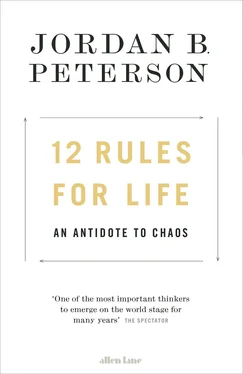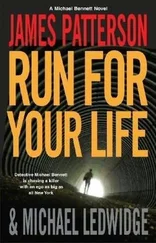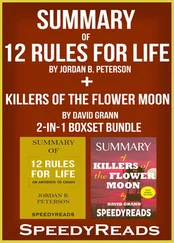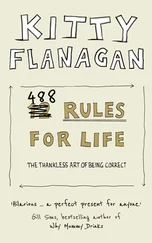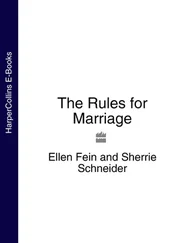Chaos is the domain of ignorance itself. It’s unexplored territory . Chaos is what extends, eternally and without limit, beyond the boundaries of all states, all ideas, and all disciplines. It’s the foreigner, the stranger, the member of another gang, the rustle in the bushes in the night-time, the monster under the bed, the hidden anger of your mother, and the sickness of your child. Chaos is the despair and horror you feel when you have been profoundly betrayed. It’s the place you end up when things fall apart; when your dreams die, your career collapses, or your marriage ends. It’s the underworld of fairytale and myth, where the dragon and the gold it guards eternally co-exist. Chaos is where we are when we don’t know where we are, and what we are doing when we don’t know what we are doing. It is, in short, all those things and situations we neither know nor understand.
Chaos is also the formless potential from which the God of Genesis 1 called forth order using language at the beginning of time. It’s the same potential from which we, made in that Image, call forth the novel and ever-changing moments of our lives. And Chaos is freedom, dreadful freedom, too.
Order, by contrast, is explored territory . That’s the hundreds-of-millions-of-years-old hierarchy of place, position and authority. That’s the structure of society. It’s the structure provided by biology, too—particularly insofar as you are adapted, as you are, to the structure of society. Order is tribe, religion, hearth, home and country. It’s the warm, secure living-room where the fireplace glows and the children play. It’s the flag of the nation. It’s the value of the currency. Order is the floor beneath your feet, and your plan for the day. It’s the greatness of tradition, the rows of desks in a school classroom, the trains that leave on time, the calendar, and the clock. Order is the public façade we’re called upon to wear, the politeness of a gathering of civilized strangers, and the thin ice on which we all skate. Order is the place where the behavior of the world matches our expectations and our desires; the place where all things turn out the way we want them to. But order is sometimes tyranny and stultification, as well, when the demand for certainty and uniformity and purity becomes too one-sided.
Where everything is certain, we’re in order. We’re there when things are going according to plan and nothing is new and disturbing. In the domain of order, things behave as God intended. We like to be there. Familiar environments are congenial. In order, we’re able to think about things in the long term. There, things work, and we’re stable, calm and competent. We seldom leave places we understand—geographical or conceptual—for that reason, and we certainly do not like it when we are compelled to or when it happens accidentally.
You’re in order, when you have a loyal friend, a trustworthy ally. When the same person betrays you, sells you out, you move from the daytime world of clarity and light to the dark underworld of chaos, confusion and despair. That’s the same move you make, and the same place you visit, when the company you work starts to fail and your job is placed in doubt. When your tax return has been filed, that’s order. When you’re audited, that’s chaos. Most people would rather be mugged than audited. Before the Twin Towers fell—that was order. Chaos manifested itself afterward. Everyone felt it. The very air became uncertain. What exactly was it that fell? Wrong question. What exactly remained standing? That was the issue at hand.
When the ice you’re skating on is solid, that’s order. When the bottom drops out, and things fall apart, and you plunge through the ice, that’s chaos. Order is the Shire of Tolkien’s hobbits: peaceful, productive and safely inhabitable, even by the naive. Chaos is the underground kingdom of the dwarves, usurped by Smaug, the treasure-hoarding serpent. Chaos is the deep ocean bottom to which Pinocchio voyaged to rescue his father from Monstro, whale and fire-breathing dragon. That journey into darkness and rescue is the most difficult thing a puppet must do, if he wants to be real; if he wants to extract himself from the temptations of deceit and acting and victimization and impulsive pleasure and totalitarian subjugation; if he wants to take his place as a genuine Being in the world.
Order is the stability of your marriage. It’s buttressed by the traditions of the past and by your expectations—grounded, often invisibly, in those traditions. Chaos is that stability crumbling under your feet when you discover your partner’s infidelity. Chaos is the experience of reeling unbound and unsupported through space when your guiding routines and traditions collapse.
Order is the place and time where the oft-invisible axioms you live by organize your experience and your actions so that what should happen does happen. Chaos is the new place and time that emerges when tragedy strikes suddenly, or malevolence reveals its paralyzing visage, even in the confines of your own home. Something unexpected or undesired can always make its appearance, when a plan is being laid out, regardless of how familiar the circumstances. When that happens, the territory has shifted. Make no mistake about it: the space, the apparent space, may be the same. But we live in time, as well as space. In consequence, even the oldest and most familiar places retain an ineradicable capacity to surprise you. You may be cruising happily down the road in the automobile you have known and loved for years. But time is passing. The brakes could fail. You might be walking down the road in the body you have always relied on. If your heart malfunctions, even momentarily, everything changes. Friendly old dogs can still bite. Old and trusted friends can still deceive. New ideas can destroy old and comfortable certainties. Such things matter. They’re real.
Our brains respond instantly when chaos appears, with simple, hyper-fast circuits maintained from the ancient days, when our ancestors dwelled in trees, and snakes struck in a flash. [18032] Van Strien, J.W., Franken, I.H.A. & Huijding, J. (2014). “Testing the snake-detection hypothesis: Larger early posterior negativity in humans to pictures of snakes than to pictures of other reptiles, spiders and slugs.” Frontiers in Human Neuroscience, 8 , 691-697. For a more general discussion, see Ledoux, J. (1998). The emotional brain: The mysterious underpinnings of emotional life . New York: Simon & Schuster.
After that nigh-instantaneous, deeply reflexive bodily response comes the later-evolving, more complex but slower responses of emotions—and, after that, comes thinking, of the higher order, which can extend over seconds, minutes or years. All that response is instinctive, in some sense—but the faster the response, the more instinctive.
Chaos and Order: Personality, Female and Male
Chaos and order are two of the most fundamental elements of lived experience—two of the most basic subdivisions of Being itself. But they’re not things, or objects, and they’re not experienced as such. Things or objects are part of the objective world. They’re inanimate; spiritless. They’re dead. This is not true of chaos and order. Those are perceived, experienced and understood (to the degree that they are understood at all) as personalities—and that is just as true of the perceptions, experiences and understanding of modern people as their ancient forebears. It’s just that moderners don’t notice.
Order and chaos are not understood first, objectively (as things or objects), and then personified. That would only be the case if we perceived objective reality first , and then inferred intent and purpose. But that isn’t how perception operates, despite our preconceptions. Perception of things as tools, for example, occurs before or in concert with perception of things as objects. We see what things mean just as fast or faster than we see what they are. [18033] For the classic treatise on this issue see Gibson, J.J. (1986). An ecological approach to visual perception. New York: Psychology Press. See also Floel, A., Ellger, T., Breitenstein, C. & Knecht, S. (2003). “Language perception activates the hand motor cortex: implications for motor theories of speech perception.” European Journal of Neuroscience, 18 , 704-708, for a discussion of the relationship between speech and action. For a more general review of the relationship between action and perception, see Pulvermüller, F., Moseley, R.L., Egorova, N., Shebani, Z. & Boulenger, V. (2014). “Motor cognition–motor semantics: Action perception theory of cognition and communication.” Neuropsychologia, 55 , 71-84. Flöel, A., Ellger, T., Breitenstein, C. & Knecht, S. (2003). “Language perception activates the hand motor cortex: Implications for motor theories of speech perception.” European Journal of Neuroscience, 18 , 704-708; Fadiga, L., Craighero, L. & Olivier, E (2005). “Human motor cortex excitability during the perception of others’ action.” Current Opinions in Neurobiology, 15 , 213-218; Palmer, C.E., Bunday, K.L., Davare, M. & Kilner, J.M. (2016). “A causal role for primary motor cortex in perception of observed actions.” Journal of Cognitive Neuroscience, 28 , 2021-2029.
Perception of things as entities with personality also occurs before perception of things as things. This is particularly true of the action of others, [18034] Barrett, J.L. (2004). Why would anyone believe in God? Lanham, MD: Altamira Press.
living others, but we also see the non-living “objective world” as animated, with purpose and intent. This is because of the operation of what psychologists have called “the hyperactive agency detector” within us. [18035] For a decent review, see Barrett, J.L. & Johnson, A.H. (2003). “The role of control in attributing intentional agency to inanimate objects.” Journal of Cognition and Culture, 3 , 208-217.
We evolved, over millennia, within intensely social circumstances. This means that the most significant elements of our environment of origin were personalities, not things, objects or situations.
Читать дальше
